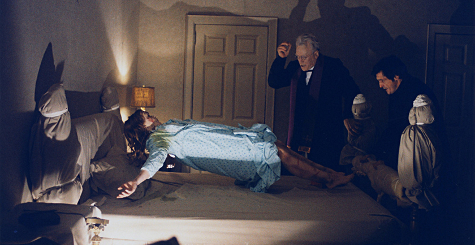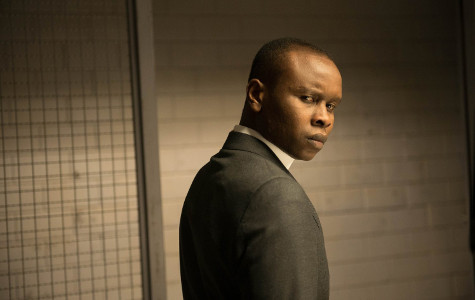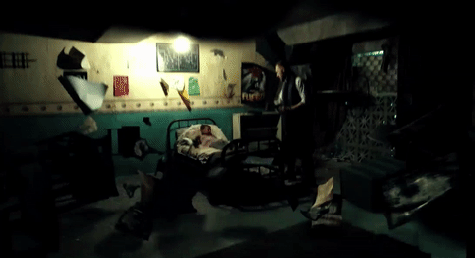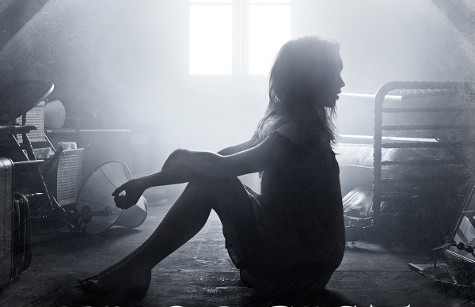
Leanna’s Thoughts: For the savvy Criminal Element reader who is familiar with my various rants and rhapsodies about what I find beautiful or lacking in modern entertainment, you know I’ve a passion for genre books, shows, and films presenting inclusive casts with strong female protagonists that don’t present an outmoded trope of sacrifice and secondary status. You may recall I slammed Penny Dreadful’s ending for being a bitter betrayal of a breathtaking heroine, but I lifted up Stranger Things as doing everything right by its strong cast.
When it comes to horror, the genre can be a dangerous place of double-standards for women, indigenous folks, and people of color—anyone already fighting for a voice and considerate representation. The Exorcist drags everyone through hell and does it all rather brilliantly, with a strong family at the core led by Geena Davis.
The Catholic Church is a global entity, and the cast reflects that. Issues the institution faces are shown in gritty, plain sight. While the Catholic Church is wholly patriarchal, involving a strong abbey of nuns led by a brilliant Abbess is very effective and much appreciated. It’s impossible for me to pick a favorite character when the two main priests are such a compelling duo, but the African priest, Father Bennett, kept revealing new and compelling dimensions.

I was rhapsodizing on the show’s solid writing, cast, and performances with my business associate and project collaborator Thom Truelove, another Criminal Element writer. We’re in agreement about what makes a good show, but he comes to similar conclusions from different angles, so we both wanted to share our thoughts.
I’m all about character first due to my background as an actor and a character-driven novelist, so I focused wholly on these beautifully flawed, relatable people. Too often in modern horror, character development takes a backseat to jump scares or effects. This show’s great effects were more sophisticated than the original, but I was far more struck by the people than the horrifying visuals. The show is all the more mortifying because I truly cared for each protagonist across the layered storylines.
I was a fan of the original movie (pretend movies 2 and 3 never happened) and novel. It’s clear the developers of the show were too. The homage is exquisite while vastly expanding depth. A mid-season reveal makes the whole franchise come together brilliantly. The source material soars from evil depths to graceful heights, all in gritty, well-written drama.
Shout out to star Geena Davis for being so strong, so vulnerable, and so terrifying. She does great work trying to make Hollywood more equal and accessible for strong women characters—from starring roles to day-players—and leads by example.
I consider character arcs effective when the full breadth of humanity and agency is shown, no matter identity. Are they 360-degree people given equal humanity? The Exorcist brings whole people to life in ghastly, powerful contrast. It is real. Inclusive, real emotional depth, life-threatening crises of faith, tests of strength and resilience, all without being “preachy.” Legitimate horror wrought from full hearts and accessible, relatable fear. The show begs for binge-watching and praying for a Season 2. With the lights on.
Thom’s Thoughts: A remake should only be made if it improves on the original or has found a way to convey an important aspect of meaning to the next generation. That’s just my opinion. Too often, remakes seem only to exploit nostalgia—sometimes without a presumably requisite understanding of the source material. Hollywood has a bad habit of stealing the good name and reputation of past properties for the presumed and proverbial fast buck.
This was part of my mindset when deciding to watch Jeremy Slater’s The Exorcist. I was expecting a protracted retelling of the 1973 film with better makeup and special effects. It was, I thought, going to be “edgier” and “updated,” meaning more shock value but with little to nothing new to say. A cash grab and a waste of time.

I knew I was wrong after just 10 minutes. Another showrunner would have played the iconic “Tubular Bells” from the original film over the opening credits. Mike Oldfield’s composition is used but at the end of the first episode. Saving the effect of the piece helped inform the audience about the pacing and intent of the series. The Exorcist isn’t in a hurry.
The first chapter of The Exorcist shows us a world and inhabitants who are in trouble. Alfonso Herrera plays Father Tomas Ortega—an echo of Father Karras in the original film. He lets us know that the premise of the story isn’t lost on the people who’ve gotten the rights to play in the sandbox. In order to successfully oppose supernatural entities, would-be exorcists have to defeat their personal demons. While Ortega does eventually win these battles, they occupy the full span of the season.
By taking its time and being careful with structure, the inner conflict of the heroes and the emotional suffering of the victims are given full range to properly unfold. It seems very clear that Mr. Slater has read William Peter Blatty's 1971 novel more than a few times. There’s no doubt he watched the film regularly. The love of both makes this more than retelling; it’s worthy homage.
The Exorcist series is securely rooted in what’s come before, and it is therefore on good footing where it does venture into new territory. Father Marcus Keane (Ben Daniels) is not a reflection of Father Merrin of the original. Keane wears the scars—in a metaphoric sense—of the troubled world and the troubled Church that attempts to serve it. The scope of this new Exorcist is global, and although it visits the old home in clever fashion, the stakes of failure are not just one lost soul. The more experienced exorcist is almost the “man with nothing to lose” trope but remains driven by the only thing he cannot lose—his faith. The Exorcist is not afraid to tell a story inspired by faith and include characters whose lives are built around it.

The promotional poster for The Exorcist features a backlit girl sitting in what appears to be a chaotic attic with her head turned a neck-breaking 180 degrees. It isn’t until halfway through Season 1 that we find out exactly what we’re in the middle of. At this point, the makers of the show know they have you, and in Chapter Eight they almost wink at you. The Pazuzu-possessed Casey almost looks at the camera and says, “Time to give the people what they want,” right before the famous head turn begins. This is almost breaking the fourth wall and is very effective, but it built to that moment of payoff. The Exorcist is more than deserving of a Season 2—and your time.
Leanna Renee Hieber is an actress (Member AEA, SAG-AFTRA), public speaker, playwright, artist and the award-winning author of Gothic, Gaslamp Fantasy novels for Tor Books such as the Strangely Beautiful saga, the Eterna Files and the Magic Most Foul saga. Her latest novel, Perilous Prophecy, releases June 20th from Tor. A passionate advocate of Gothic fiction and life-long ghost story aficionado, she also works as a licensed NYC tour guide for Boroughs of the Dead. http://leannareneehieber.com – http://twitter.com/leannarenee – http://facebook.com/lrhieber
Thom A. Truelove has had a wide-ranging career in music, art, design, production and science, with particular passion and expertise in 18th century history and Masonry. A DJ, musical consultant, graphic artist and illustrator, sculptor and a frequent presenter at Sci-Fi/Fantasy, Steampunk and Comic cons across the country, his short fiction has appeared in anthologies such as the Lovecraftian collection The Book of Starry Wisdom, the forthcoming Ministry of Peculiar Occurrences anthology and more. He writes regularly for Criminal Element and more work can be found at http://thomtruelove.com.
